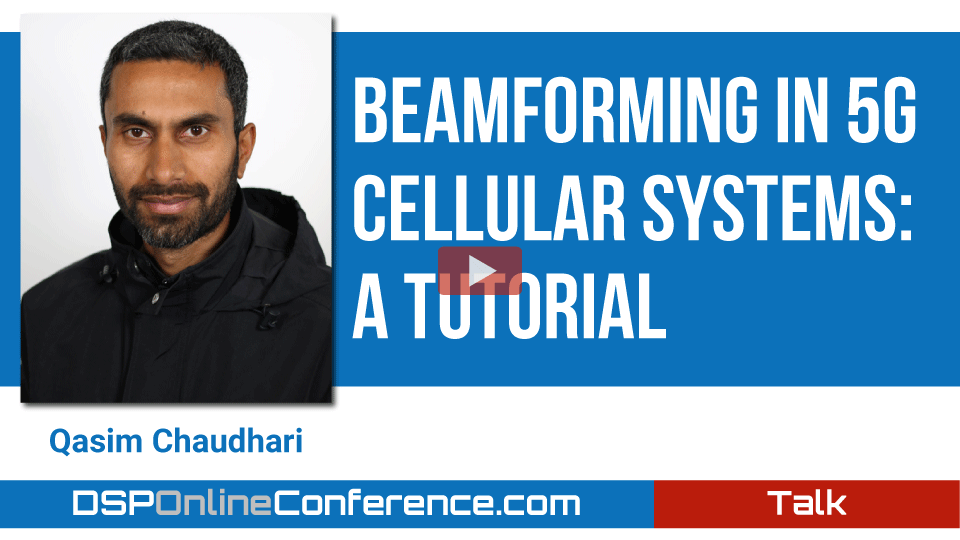Home >
Beamforming in 5G Cellular Systems: A Tutorial
Qasim Chaudhari - Watch Now - Duration: 52:38

Is massive mimo really that good as projected in research papers and your talk? How did it turn out in actual implementations?
It goes like this. Research papers are written with some assumptions and later implemented in labs. The purpose of lab demos is to VERIFY what was proposed in the paper : ) To be fair, a lab environment cannot support all real world parameters in any case. So massive MIMO with TDD is good and is the wave of future. However, several shortcomings were found when the focus was shifted from lab demos to actual network implementations. This by no means imply that technology has a problem; just that additional problems need to be solved that arise from this setup. For example, transmission bandwidths are expanding as compared to earlier generations of cellular systems. But the UE power is limited that spreads out over that wide bandwidth and decreases the CSI quality at the base station in TDD mode. Then, we have a carrier aggregation problem. Transmissions with disjoint carriers are allowed but creates problems for channel estimation at disjoint frequencies. Moreover, in general UE can have several Rx antennas but only one or two Tx antennas. That means that the channel estimated at the BS can only estimate some columns of the channel matrix H but not all of them. There are several other problems too but you get the general idea. These issues are gradually being solved by combined industrial and academic effort.
Hi! Thank you for this talk, it was very interesting. I have one question regarding a phase shifting. As far as I understand, thanks to appropriate phase shifts between each of antennas, we can steer the beam direction (in TX) or filter the signal from chosen direction (in RX). Question is: how phase shifts are introduced in the transmitters? Is it implemented in digital domain before a signal is fed to a ADC or its implemented in a analog chain through some phase shifters?
Good question. That was a point of contention for the first few years during the development. Everyone wants full flexibility and control digital phase and amplitude shifting (known as digital beamforming) offers. However, each Tx/Rx chain then requires its own RF and ADC/DAC that becomes quite expensive. The general trend is that sub-6 GHz offers full digital beamforming while mmWave transceivers implement a hybrid between digital and analog domains. Here, digtial part controls the number of independent streams while analog part directs the signal in particular directions.
Great talk! Would you be able to comment on the typical antenna arrays being used currently by the 5G NR cellular systems and how the choice is arrived at?
There is no fixed requirement and standard is going to evolve at all. That's due to breathtaking speed of development in this field and at this time. Most common are the rectangular planar arrays which can scan both horizontal and vertical directions, although vertical angular spread is usually quite low as compared to the horizontal spread.
You didn't go into details of non-line of sight beamforming due to time constraints but in a few words does that actually work? It's difficult to imagine a multipath non-line of sight channel with beamforming....
I am waiting for the zoom meeting to answer the questions but that is probably not working. So let's do that here. In non-line of sight, there are no physical beams. There are no beams at all! In fact, these are mathematical directions in which the signal is amplified or suppressed through the help of weight vectors, one for each stream. Any matrix operation (like a channel) is a rotation and scaling, so we choose the weight vectors such that they form an optimal pattern at the Rx after the action of the wireless channel. That's why general terms of precoding and combining are used.




Hello Qasim! Fascinating presentation!
Last year I made a beamformer using SDR and Matlab for my MSc project. I just wanted to share! Here is the link to the Reddit post, including the description, pictures, and the repository.
https://www.reddit.com/r/RTLSDR/comments/j3mg6a/digital_beamforming_system_using_a_bladerf_a4/